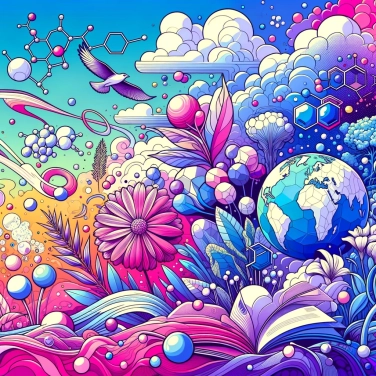Some plants only need very little light as they have developed adaptation mechanisms to survive in low light conditions, such as the ability to efficiently use available light or store more energy.

Some plants have developed special pigments to take advantage of the slightest amount of available light. Among these pigments, chlorophyll b is particularly notable, as it can capture light wavelengths that classic chlorophyll (chlorophyll a) absorbs poorly. These pigments act as additional antennas that effectively capture and transfer light to the active centers of photosynthesis. Other interesting pigments, such as carotenoids, provide support: they accompany chlorophylls and further expand the range of usable colors. As a result, even in dense shade or at the bottom of a thicket, these adapted pigments allow plants to continue their little solar cooking.
Plants growing in the shade manage the little available light by optimizing their photosynthetic responses. They have particularly large and abundant photosynthetic antennas, capable of capturing a maximum of photons even when light is scarce. Some plants, like ferns or understory plants, also adapt their metabolism by favoring reactions known as low light intensity photosynthesis. In this way, they are able to produce essential sugars for their growth without wasting energy, even when the environment is very dark. To maintain a good level of efficiency, these plants modify the internal organization of their leaves, positioning their chloroplasts to better capture each photon that passes by. Ultimately, thanks to these few biological tricks, they manage very well without needing to sunbathe all day in full sunlight.
Some plants are champions when it comes to growing in the shade, thanks to cunning adaptations in their shape and internal functioning. For example, they often develop broad, very thin leaves to catch any ray of light that passes by. Others prefer to focus on an elongated shape with stretched stems to reach, as best they can, the indirect light that filters through the dense vegetation. Internally, many of these plants boost their chlorophyll levels to make the most of the little light available. Some even slow down their metabolism and energy needs to conserve the energy they manage to gather with difficulty. Not to mention that several of them have underground or internal reserves, such as tubers or rhizomes, which provide a helpful boost when light becomes really scarce.
Plants growing in the shade do not waste their energy on producing extravagant or unnecessary structures. They have a slowed metabolism compared to those living in full sunlight. Rather than growing quickly and abundantly, they focus on slower, yet more economical growth. Some retain more energy for the bare essentials: maintaining their vital organs and growing slowly. In short, they optimize every captured ray, thus avoiding any energy waste.
The chloroplasts of certain shade plants can move within the cells, positioning themselves optimally to capture maximum light under very low conditions.
The plant known as "mother-in-law's tongue" (Sansevieria) is capable of purifying the air at night by releasing oxygen, which is unusual since most plants do this primarily during the day.
Some plants known as "sciaphiles" have very large and thin leaves to effectively capture any available light.
Mosses, particularly adapted to low light conditions, can survive even with just 1% of direct sunlight.
Plants with little light grow more slowly and therefore consume less water. It is important to reduce the frequency of watering to avoid excessive moisture that could harm their root health.
It is recommended to fertilize in moderation, as these plants have slow growth and therefore require fewer nutrients. A light and spaced-out fertilization is usually sufficient.
Among the most well-known are pothos, spider plant (chlorophytum), ivy, and aglaonema. These plants require little maintenance and tolerate low light levels well.
In general, yes. As these plants optimize their metabolism to adapt to reduced light levels, their growth is often slower in order to better conserve their energy resources.
Yes, some so-called shade plants, such as the zamioculcas or sansevieria, can survive with artificial light or very low light. However, a grow light can be helpful to ensure optimal growth in the long term.

No one has answered this quiz yet, be the first!' :-)
Question 1/5